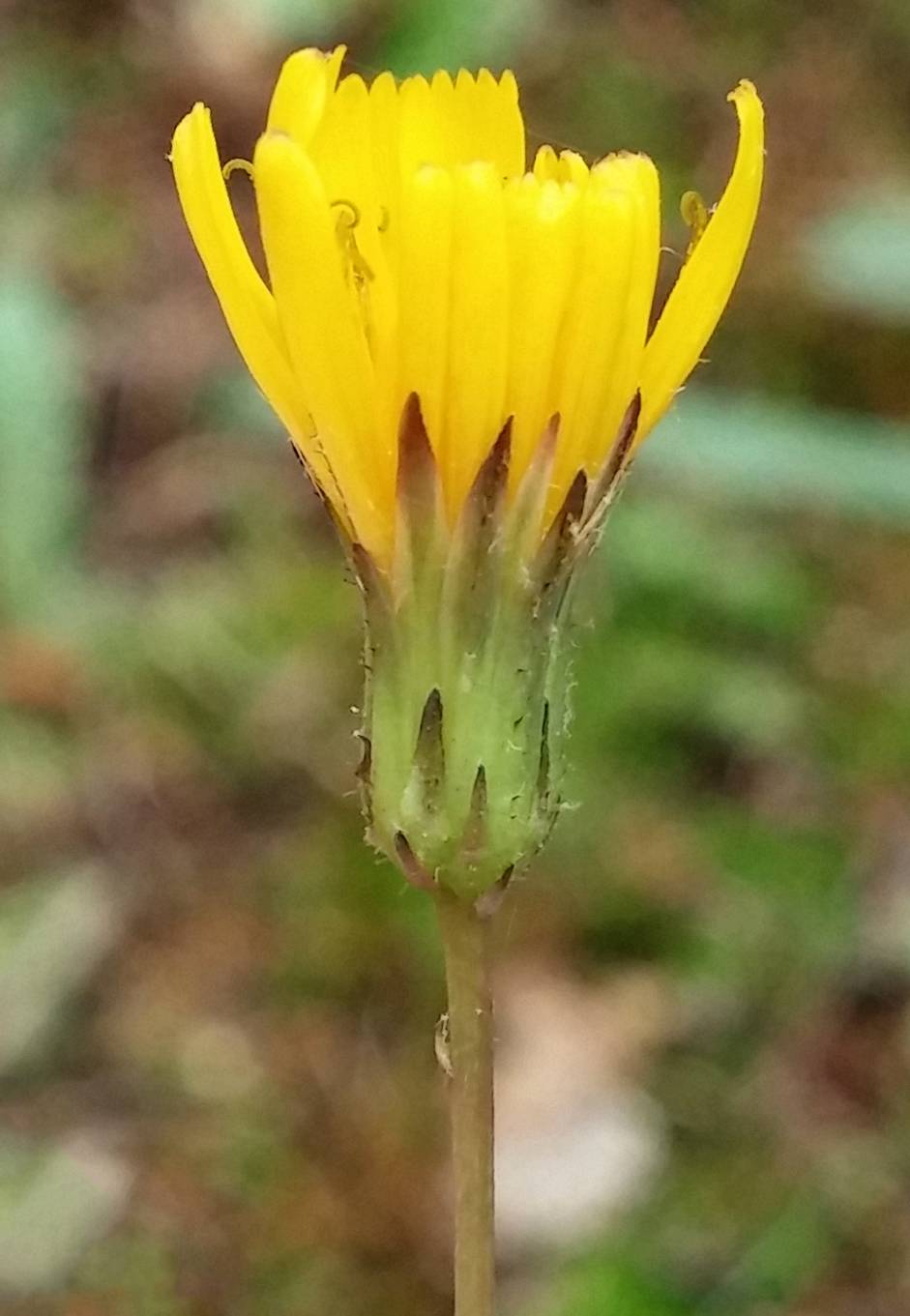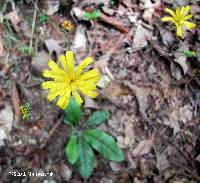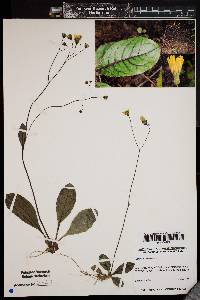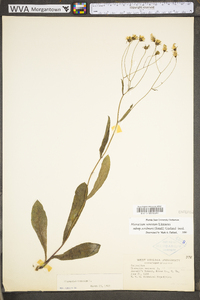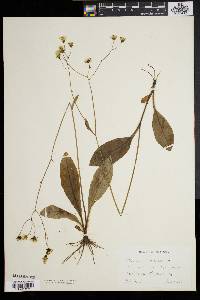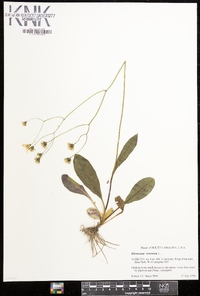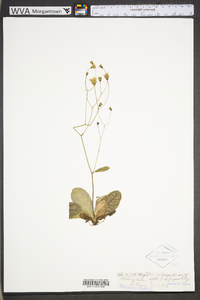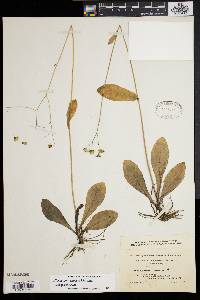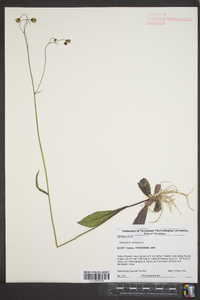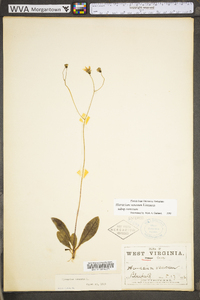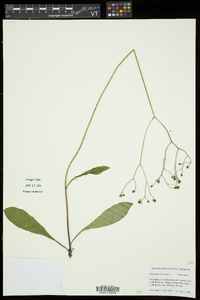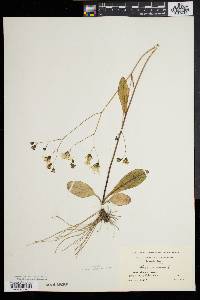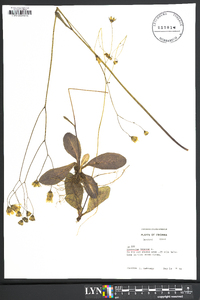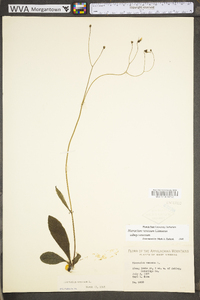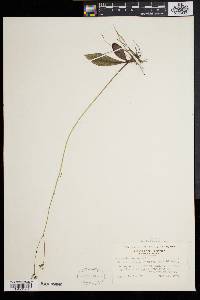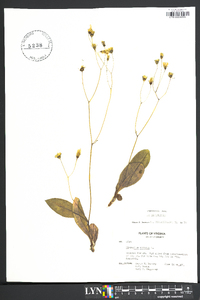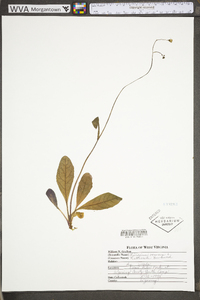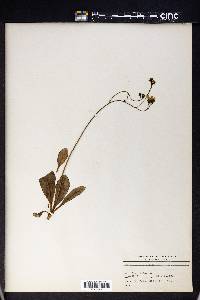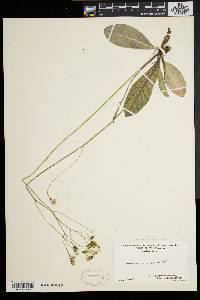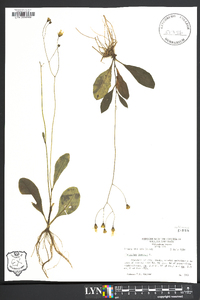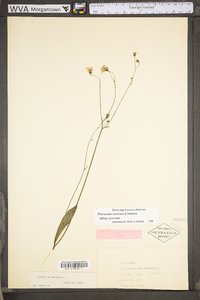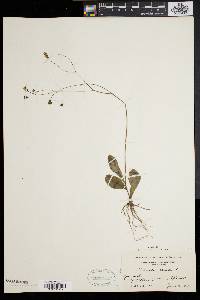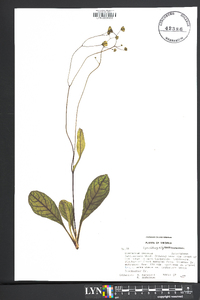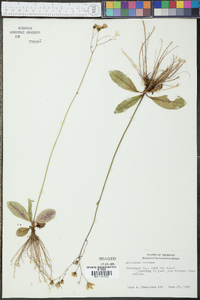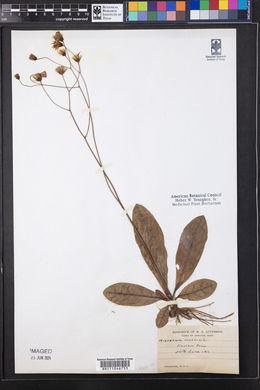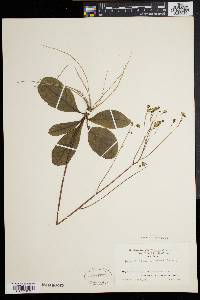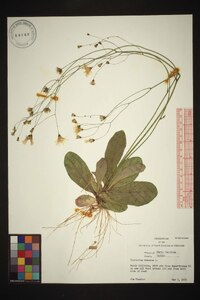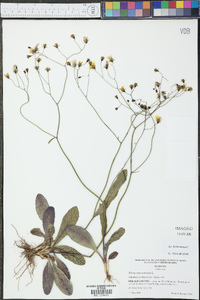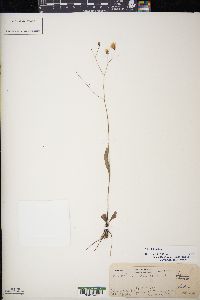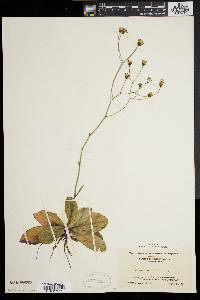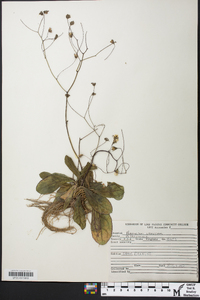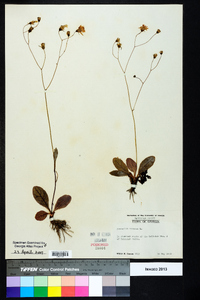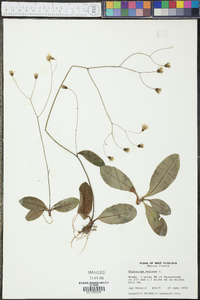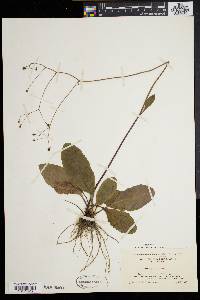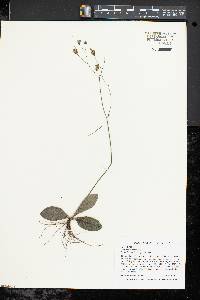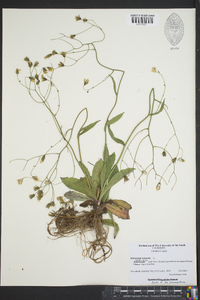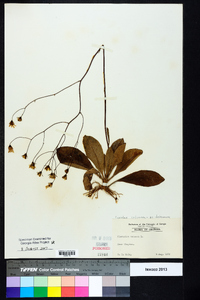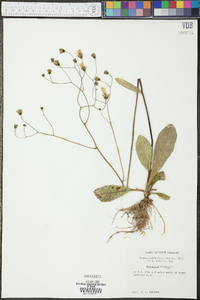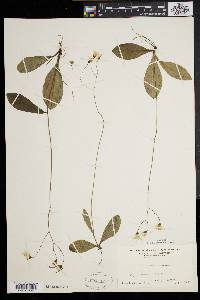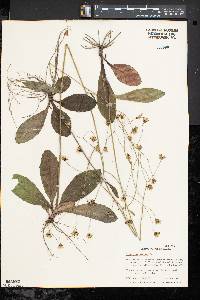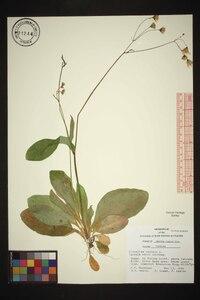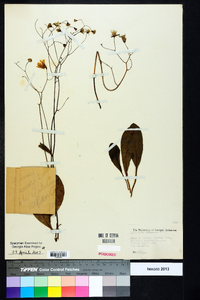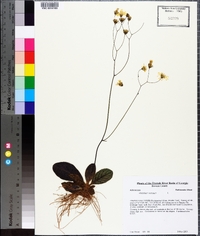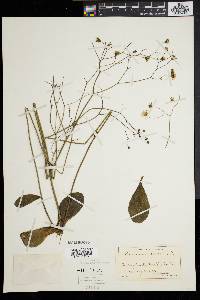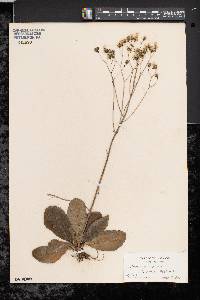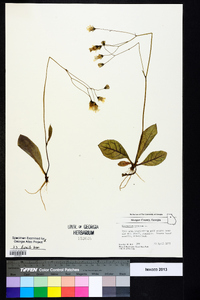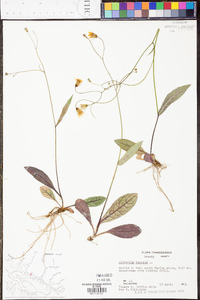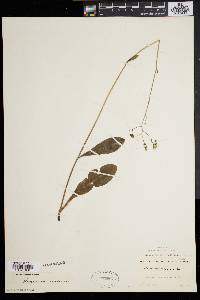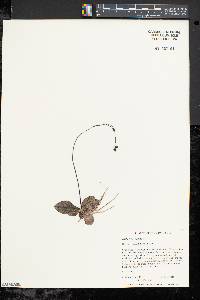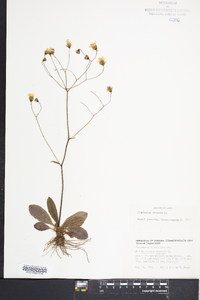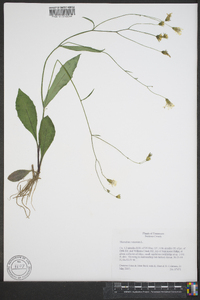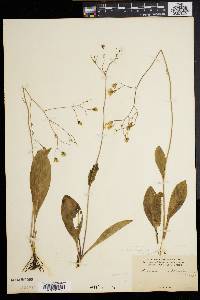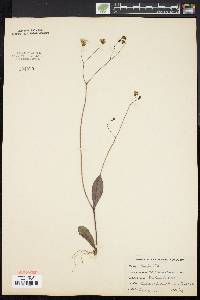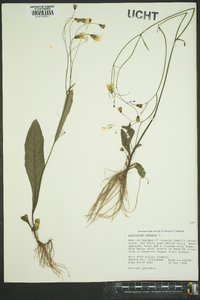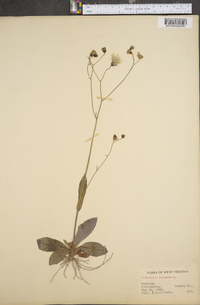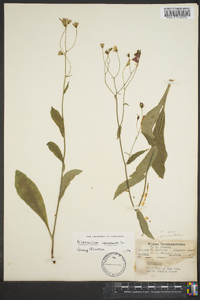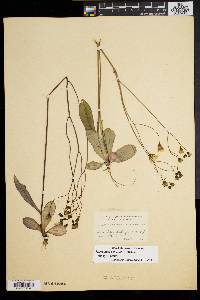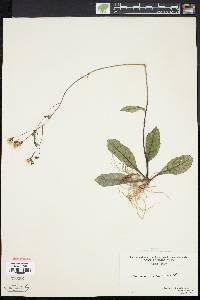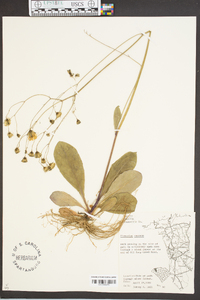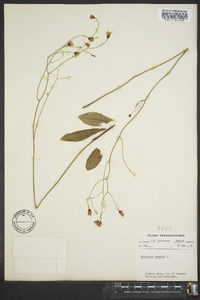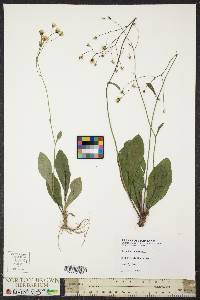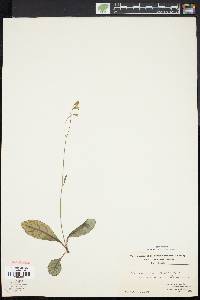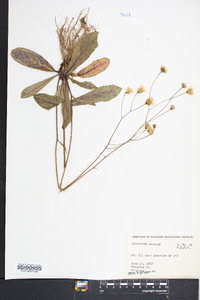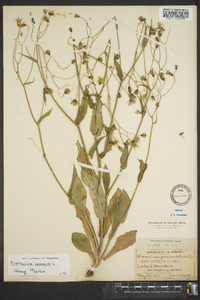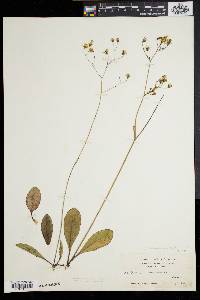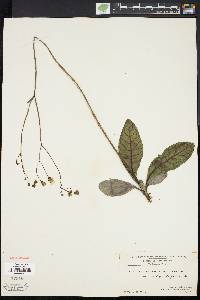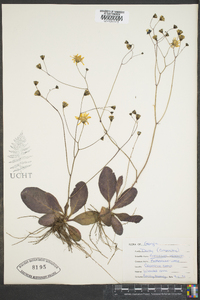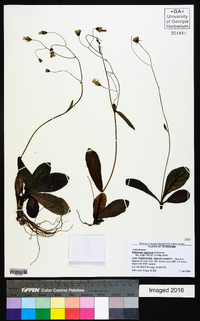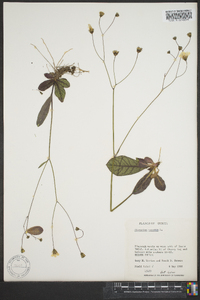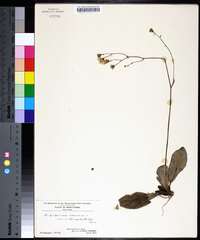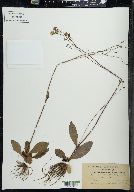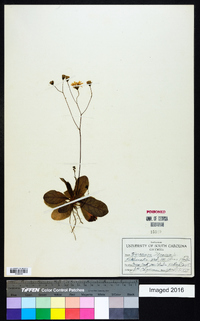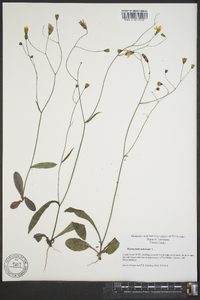
|
|
|
|
Family: Asteraceae
Rattlesnake-Weed
[Pilosella venosa (L.) F. W. Schultz & Sch. Bip.] |
Plants ca. 45 cm. Stems proximally piloso-hirsute (hairs 1-3+ mm) to glabrate, distally usually glabrous, rarely piloso-hirsute. Leaves: basal 3-6+, cauline 0-1+; blades obovate or elliptic to oblanceolate, 40-60(-120) × 15-35(-50+) mm, lengths 2-3(-4) times widths, bases cuneate, margins usually entire, sometimes denticulate, apices rounded to acute, abaxial faces piloso-hirsute (hairs 2-5 mm) and stellate-pubescent, adaxial glabrous or piloso-hirsute (mostly near margins, hairs 2-3 mm). Heads 4-10(-20+) in corymbiform to paniculiform arrays. Peduncles usually stipitate-glandular, rarely glabrous or glabrate. Calyculi: bractlets 6-10+. Involucres obconic to campanulate, 7-9 mm. Phyllaries 12-13+, apices acute, abaxial faces usually stellate-pubescent and stipitate-glandular, rarely glabrous. Florets 30-45+; corollas yellow (sometimes pale), 7-11 mm. Cypselae (usually black, sometimes red-brown) columnar, 3-4 mm; pappi of ca. 50+, stramineous bristles in ± 2 series, 4-5 mm. Flowering (Apr-)May-Jul(-Sep). Openings in forests, sandy hillsides; 10-300 m; Ont.; Ala., Conn., Del., D.C., Ga., Ill., Ind., Ky., Maine, Md., Mass., Mich., Miss., Mo., N.H., N.J., N.Y., N.C., Ohio, Okla., Pa., R.I., S.C., Tenn., Vt., Va., W.Va. Plants of Hieracium venosum with adaxial faces of leaf blades glabrous have been called var. nudicaule. The type of Hieracium marianum Willdenow may have resulted from a cross between plants of H. venosum and H. gronovii or H. scabrum (M. L. Fernald 1943c).
Stems 1-few from a short, praemorse rhizome, 2-8 dm, glabrous or very nearly so, naked or with 1-3(-6) reduced lvs; basal lvs elliptic to ovate or broadly oblanceolate, 3-16 cm (short petiole included) נ0.8-5 cm, 1.7-5 times as long as wide, often densely long-setose along the margins and toward the base, otherwise sparsely so or subglabrous, the midrib and main veins generally reddish-purple above in life, the whole undersurface sometimes reddish-purple; infl open, corymbiform, the peduncles elongate, usually slender, and often rather flexuous; invol 7-10 mm, glabrous or sometimes evidently stipitate-glandular, obscurely or not at all stellate, the peduncles likewise; fls 15-40 per head; achenes 2.2-4 mm, truncate or more often distinctly narrowed near the summit; 2n=18. Mostly in dry, open woods; N.Y. to Va. and n. Ga., w. to Mich., Ky., Tenn., and Ala.; c. Fla. May-July. H. سcribneri Small is a hybrid with no. 15, and H. حarianum Willd. is thought to be a hybrid with no. 16 [Hieracium gronovii L.] or 18 [Hieracium scabrum Michx]. Gleason, Henry A. & Cronquist, Arthur J. 1991. Manual of vascular plants of northeastern United States and adjacent Canada. lxxv + 910 pp. ©The New York Botanical Garden. All rights reserved. Used by permission. From Flora of Indiana (1940) by Charles C. Deam I have found this species in three places in Clark County and in no other place. A few plants were found on the crests of ridges with chestnut oak and Virginia pine. It has also been reported from Floyd, Jefferson, Monroe, and White Counties. I have not been able to check any of these reports. I have searched the herbaria of the Field Museum and of the University of Illinois for the Lake County specimen, but I did not find it. N. C. Fassett says there is no specimen in the Umbach herbarium at the University of Wisconsin. Specimens of Hieracium Gronovii might be mistaken for this species. ...... Indiana Coefficient of Conservatism: C = 10 Wetland Indicator Status: N/A |
This project was made possible in part by the Institute of Museum and Library Services [MG-70-19-0057-19].
Powered by Symbiota

